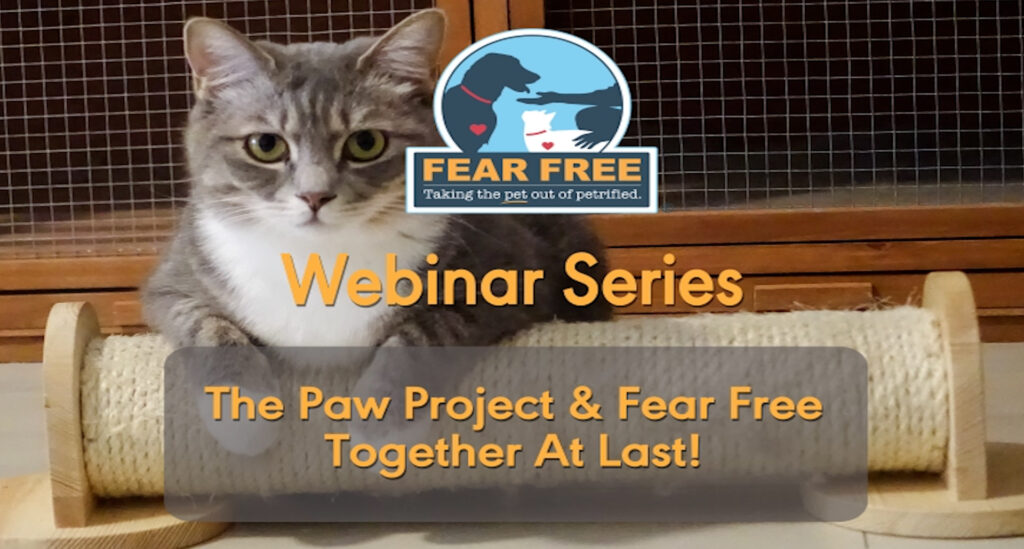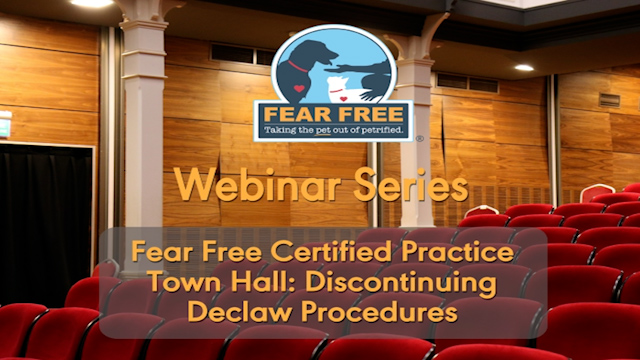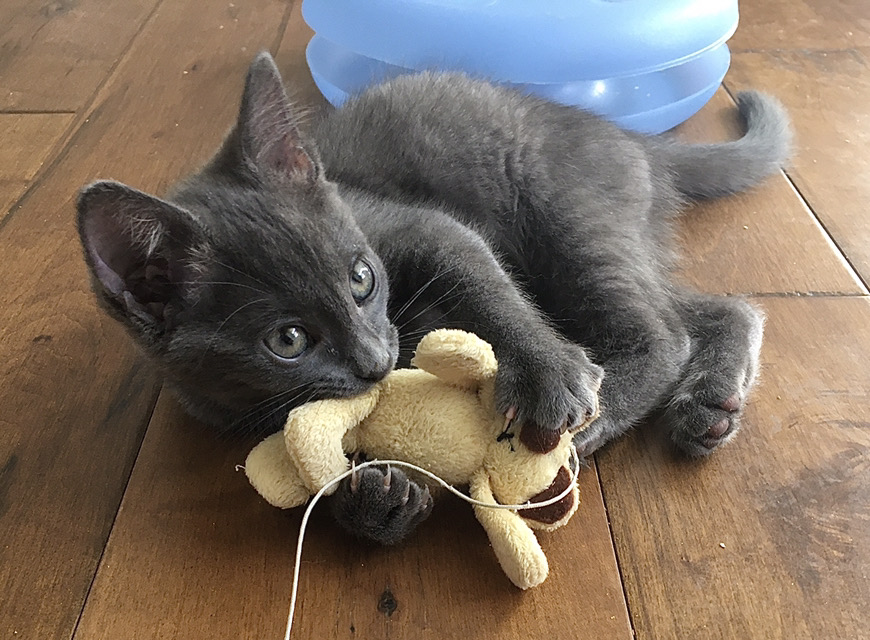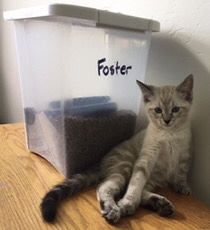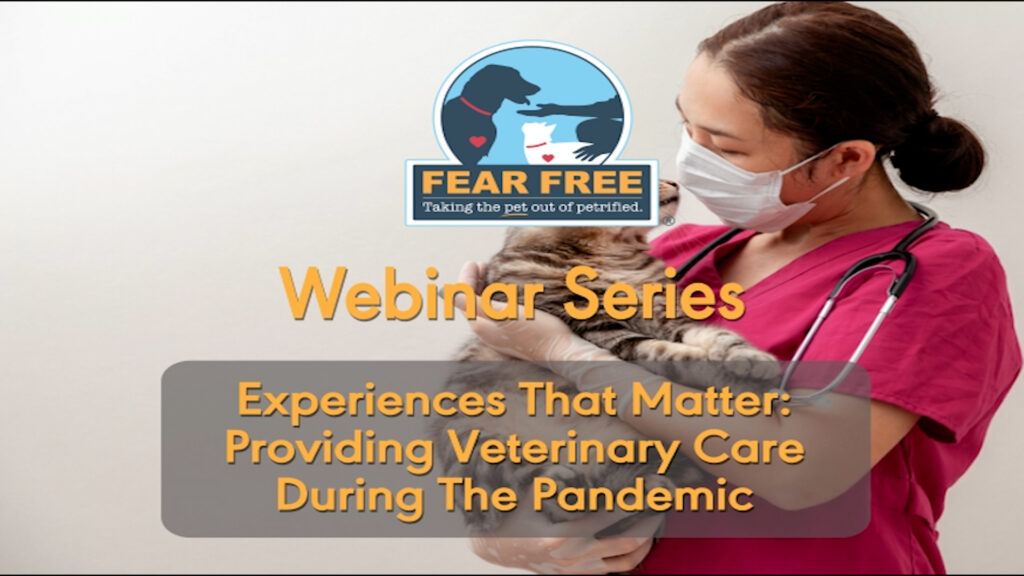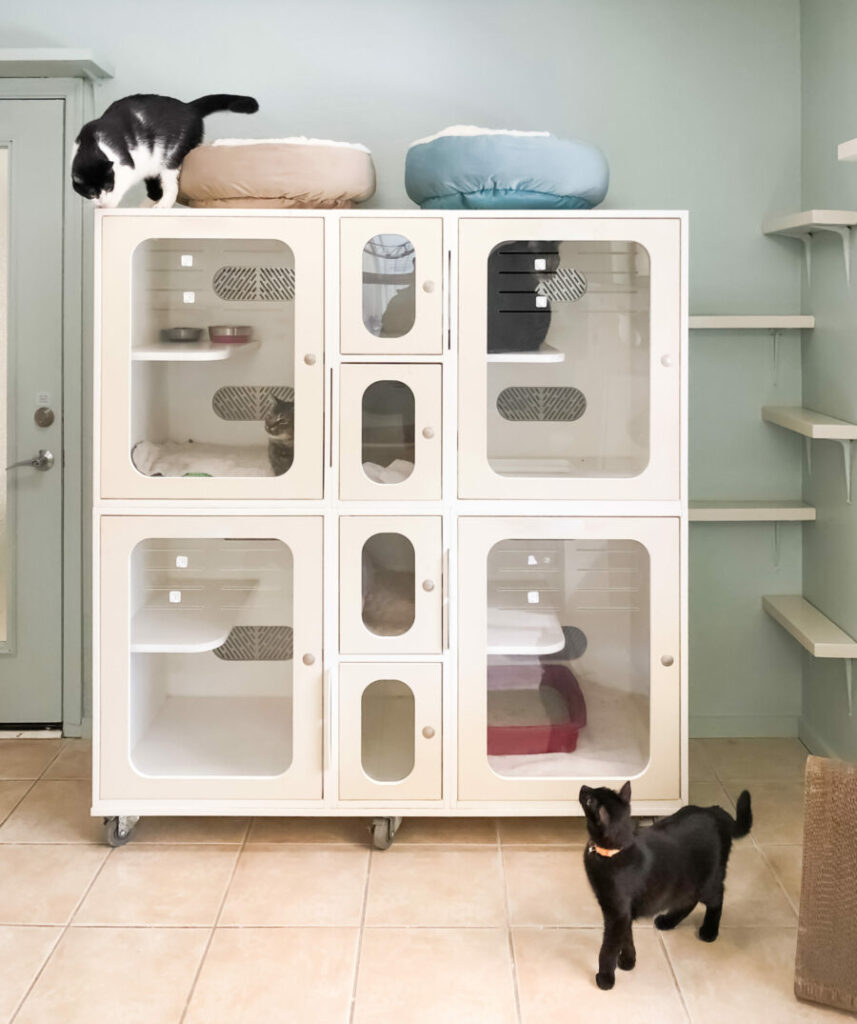
Fortunately, rescue advocates across America are working to change that perception by creating cat-friendly shelters that offer enrichment along with aesthetically pleasing designs.
Kate Benjamin, coauthor of the bestselling books “Catification” and “Catify to Satisfy,” which she wrote with Animal Planet star Jackson Galaxy, and founder of Hauspanther, a company that helps people and organizations design cat-friendly spaces, said “catifying” shelters benefits cats, caregivers, and potential adopters. The overarching approach is to create a space as inviting as a cat café.
 “If you can see a cat being a cat – really climbing and scratching and playing and being a cat, not just hiding in a cage – you can picture that cat in your home,” she said. “You can get to know their personality better.”
“If you can see a cat being a cat – really climbing and scratching and playing and being a cat, not just hiding in a cage – you can picture that cat in your home,” she said. “You can get to know their personality better.”
Cats can feel stress in an unfamiliar environment such as a shelter, where they might not be able to engage in typical feline behavior like climbing, hiding, and scratching. So Benjamin said a top priority is creating hiding spaces, such as installing wooden, painted boxes on the ground or on walls.
“Hiding spaces have been proven in scientific studies to help reduce stress in cats. It gives them choice and control over their environment,” she said. “This is a great DIY project if a shelter has somebody who has power tools and some woodworking skills.”
She noted hiding spaces can be up high to allow climbing and perching, since cats feel safer with a better view of their surroundings. Other design suggestions include the following:
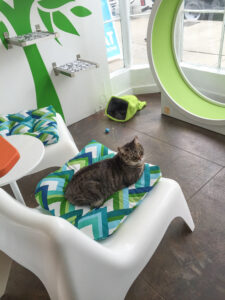
- Cat trees and towers. Just be sure they aren’t covered in carpet and are painted and sealed for easy cleaning.
- Shelves and cat hammocks. Benjamin offers hammock designs that can easily be crafted from fleece by volunteers and hung in boxes or mounted to a climbing wall.
- Ramps. These are terrific for kittens or senior cats with mobility issues.
- Benches near cat cubby holes. Potential adopters can sit near the cats and have a better chance for interaction.
- Thoughtful toy storage. Instead of tossing toys in a pile on the floor, Benjamin suggests creating a storage or display system so a visitor can easily grab a wand toy and play with the cats.
- Catios. These screened outdoor patios give shelter cats protected time outdoors.
- Color-themed blankets. Matching blankets can be comfortable for cats and make the space more appealing to potential adopters.
Benjamin emphasized that shelter staff shouldn’t feel overwhelmed if they don’t have much money or space for renovations. It’s fine to start small.
“You can just buy $4 shelves and install them properly – make sure all the cracks are sealed,” she says.
 If a shelter only has a closet that’s used for out-of-cage time and meet and greets, she says to avoid just putting a folding chair inside.
If a shelter only has a closet that’s used for out-of-cage time and meet and greets, she says to avoid just putting a folding chair inside.“Maybe you only have $500 to work with. Build a bench, put the litter box underneath it, add some shelves, maybe a piece of art on the wall, a hiding box,” she advises. “Somebody just has to be committed to making that happen.”
Benjamin credits Kate Hurley, DVM, and her colleagues at the UC Davis Koret Shelter Medicine Program with helping to fuel the “catification” movement through scientific research, as well as cat lovers who work and volunteer in shelters but may have already catified their homes. (Durability and the need for sanitizing are two big differences between residential and shelter catification.)
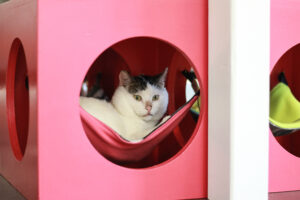 Often working with Rescue Rebuild, a program of Greater Good Charities, Benjamin has helped transform cat spaces at shelters like Santé D’Or in Los Angeles, Calif.; Dumb Friends League in Denver, Colorado; Liberty Humane Society in Jersey City, New Jersey; and the domestic violence shelter Sojourner Center in Phoenix, Ariz., which has a companion animal program.
Often working with Rescue Rebuild, a program of Greater Good Charities, Benjamin has helped transform cat spaces at shelters like Santé D’Or in Los Angeles, Calif.; Dumb Friends League in Denver, Colorado; Liberty Humane Society in Jersey City, New Jersey; and the domestic violence shelter Sojourner Center in Phoenix, Ariz., which has a companion animal program.Her latest project is Operation Catification, a training program for shelters set to launch in January 2022. Shelter representatives can apply for the 12-week course, which Benjamin will instruct; at the end of the course, some of the final projects will receive grants, and one shelter will win a full makeover with Rescue Rebuild. (Interested animal shelters can email the program coordinator at OperationCatification@GreaterGood.org to be notified as soon as the application period begins.)
“The idea is to create an environment that brings out the best in cats because it reduces that fear, anxiety and stress, and shows them off in their best light,” Benjamin said. “Catification is mostly environmental enrichment for cats – then it has this extra icing on the cake of being beautiful.”
This article was reviewed/edited by board-certified veterinary behaviorist Dr. Kenneth Martin and/or veterinary technician specialist in behavior Debbie Martin, LVT.
Award-winning journalist Jen Reeder is former president of the Dog Writers Association of America. She hiked over 1,000 miles to fundraise for Blackhat Humane Society on the Navajo Nation using the Walk for a Dog app.
Photos, top to bottom: Kate Benjamin for Sojourner Center; courtesy Dumb Friends League; Kate Benjamin for Sante D’Or; courtesy Rescue Rebuild for Liberty Humane Society; courtesy Rescue Rebuild for Liberty Humane Society


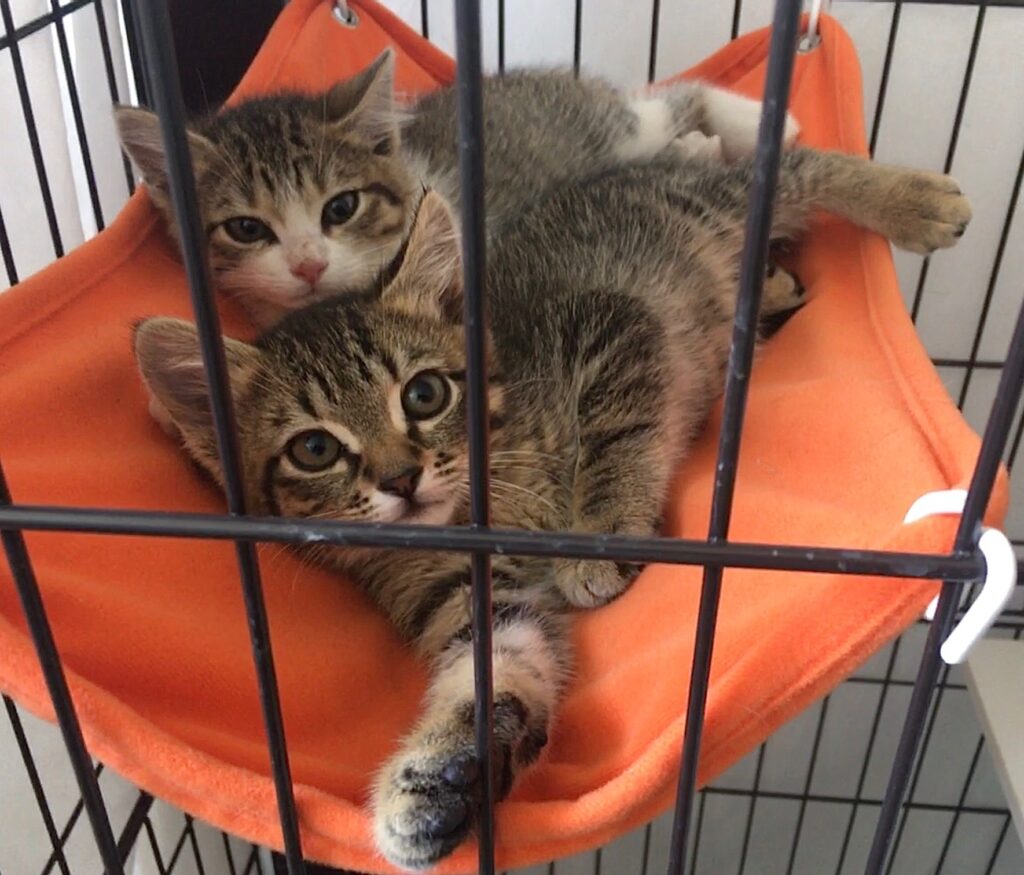
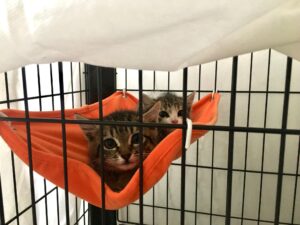 their crate and train them together. A more frightened kitten may see her bolder littermate getting treats and decide you’re not so bad after all. On the other hand, it may incite aggression between kittens so observe carefully to determine whether to train them together or separately.
their crate and train them together. A more frightened kitten may see her bolder littermate getting treats and decide you’re not so bad after all. On the other hand, it may incite aggression between kittens so observe carefully to determine whether to train them together or separately.